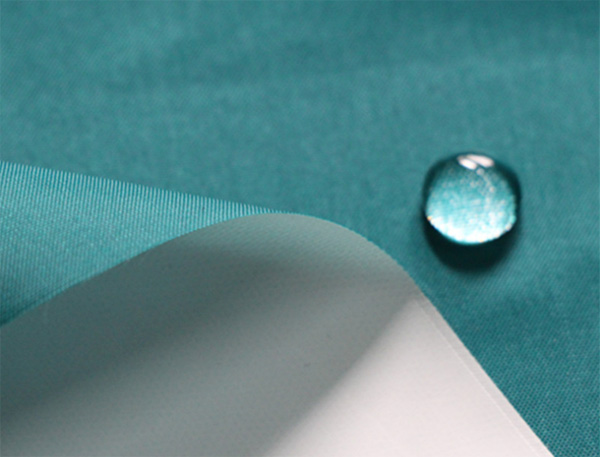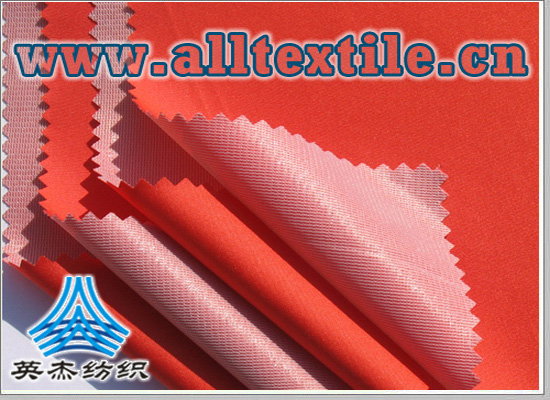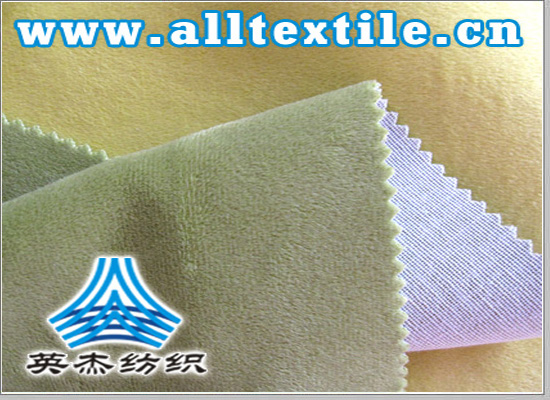Glass fiber coated polytetrafluoroethylene cloth production process
Glass fiber coated polytetrafluoroethylene cloth is made of glass fiber cloth as the base material and impregnated with polytetrafluoroethylene dispersion.
The surface of the impregnated fiberglass cloth is coated with a thin layer of small fluorine resin particles, and then undergoes drying, baking, sintering and other processes to evaporate the dispersion and leave behind tiny PTFE particles, which are closely attached to the surface of the fiberglass cloth. The surface and pores become a dense and continuous whole, achieving the purpose of strong bonding between fiberglass cloth and PTFE, becoming a new material that not only has the characteristics of fiberglass substrates, but also has many excellent properties of fluoroplastics. According to different needs, inorganic or organic fillers can be added to the dispersion to further improve its electrical properties, anti-aging properties and wear resistance. The addition of different pigments also increases its excellent decorative properties.

handicraft Research
1.Raw materials
(1)Polytetrafluoroethylene (PTFE) dispersion
Polytetrafluoroethylene, commonly known as the king of plastics, is one of the best-performing plastics. It has excellent temperature resistance and corrosion resistance, excellent insulation properties, is non-stick, non-toxic, odorless and harmless to the human body.
(2) The base material of glass fiber cloth coated products should have high temperature resistance and good tensile strength. Compared with natural fibers and chemical fibers, glass fiber has the advantages of high strength, small elongation, and good chemical stability. It can Make up for the shortcomings of PTFE and maintain dimensional stability.
2. Production process and key technologies
The main technical keys of the glass fiber impregnation process with PTFE dispersion include the following three aspects: research on PTFE dispersion concentration, impregnation temperature and speed
The concentration of PTFE dispersion directly affects the surface finish, flatness, thickness and resin content of the product. The higher the concentration, the greater the thickness after each impregnation, and the number of completed impregnations can be reduced accordingly; however, if the PTFE used in one impregnation is too thick, cracks on the surface of the product may easily occur after drying. In order to ensure product quality, a low-concentration dispersion should be used, preferably after multiple immersions.
The temperature distribution of the impregnation furnace is divided into three areas according to the facade, and the three processes of impregnation, drying and baking are completed respectively.
Low temperature zone: The temperature in the first section of the lower part of the impregnation unit directly affects the surface temperature of the impregnation tank, and is related to the bubble bursting rate and the number of defects such as flow marks on the liquid surface. If the temperature in this area is too high, the dispersion of glass cloth will dry too quickly, resulting in bubble marks and flow marks. At the same time, the higher temperature in this area radiates to the bottom, causing skin to form on the surface of the PTFE liquid. PTFE knots will remain on the impregnated glass fiber cloth, seriously damaging the quality of the cloth.
Medium temperature zone: When the impregnated cloth enters the second section in the middle of the unit, the evaporation of water must be gradually completed. If the temperature is too low, the evaporation of water will be incomplete, affecting the effect of the next impregnation; if the temperature is too high, it is not conducive to the uniform escape of water, and also It hinders the temperature control of the next section.

High temperature zone: When entering the upper third zone, the remaining moisture, surfactant and low molecular weight substances in the resin on the cloth should be completely volatilized to facilitate the next impregnation process. If the temperature in this area is too high, it will cause local PTFE sintering, which will affect the impregnation effect of the next process; if the temperature in this area is too low, it will make the cloth surface sticky, and the cloth layers will stick together during winding.
Although the impregnation unit is divided into three temperature zones from the bottom to the top, they are not completely separated, but gradually change continuously, and there is no obvious deviation between the zones.
The transfer speed of fiberglass cloth dipping is one of the key factors affecting production efficiency and product quality.
The speed is slow, and the dispersion liquid evenly penetrates the cloth surface, which can avoid flow marks, reduce product defects, and ensure good cloth surface quality. However, if the speed is too slow, it will reduce production efficiency and increase costs. The speed is fast, and defects such as bubbles and flow marks are easily produced, and the drying time is insufficient, the drying is not thorough, and the cloth surface becomes sticky.

Research on sintering temperature and speed
PTFE resin is different from thermosetting resin in that it does not have a “curing” stage, but must be sintered at high temperature. The sintering furnace is divided into upper and lower layers. The lower layer further removes surfactants and low molecular substances in PTFE resin, while the upper layer completes the “plasticization” process of PTFE resin. The temperature of the lower layer should be controlled lower, while the upper layer should reach the “plasticizing” temperature of PTFE resin. The characteristic is that the cloth surface changes color immediately, white products change from pure white to earthy white, and black products change from blue-gray to jet black. If the upper temperature is too high or stays at the plasticizing temperature for too long, the cloth will become brittle and its performance will decrease.
The selection of sintering speed must meet the temperature requirements. Sintering speed and temperature are two closely related factors. The appropriate speed must be selected on the premise of meeting the temperature requirements. If the temperature required for plasticization is not reached, the speed will be slower, or even PauseIt is impossible to complete sintering before, but once the plasticizing temperature is reached, sintering can be completed in just a few seconds. Therefore, a faster transmission speed will not affect plasticization. At the same time, the thickness of the glass cloth impregnated with PTFE is uniform and relatively thin, so the heat transfer is rapid and it is easy to sinter.
Quality requirements for fiberglass base cloth
PTFE products have extremely high requirements on the quality of the base fabric. The main factors affecting product quality are the material of the fiberglass base fabric and the maturity of the technology in the impregnation process. The base fabric is not allowed to have serious defects such as cloth surface wrinkles, yarn joints, broken yarns, oil stains, etc. The quality requirements for cloth surface smoothness, density and density are also higher than those of ordinary gray fabrics.




